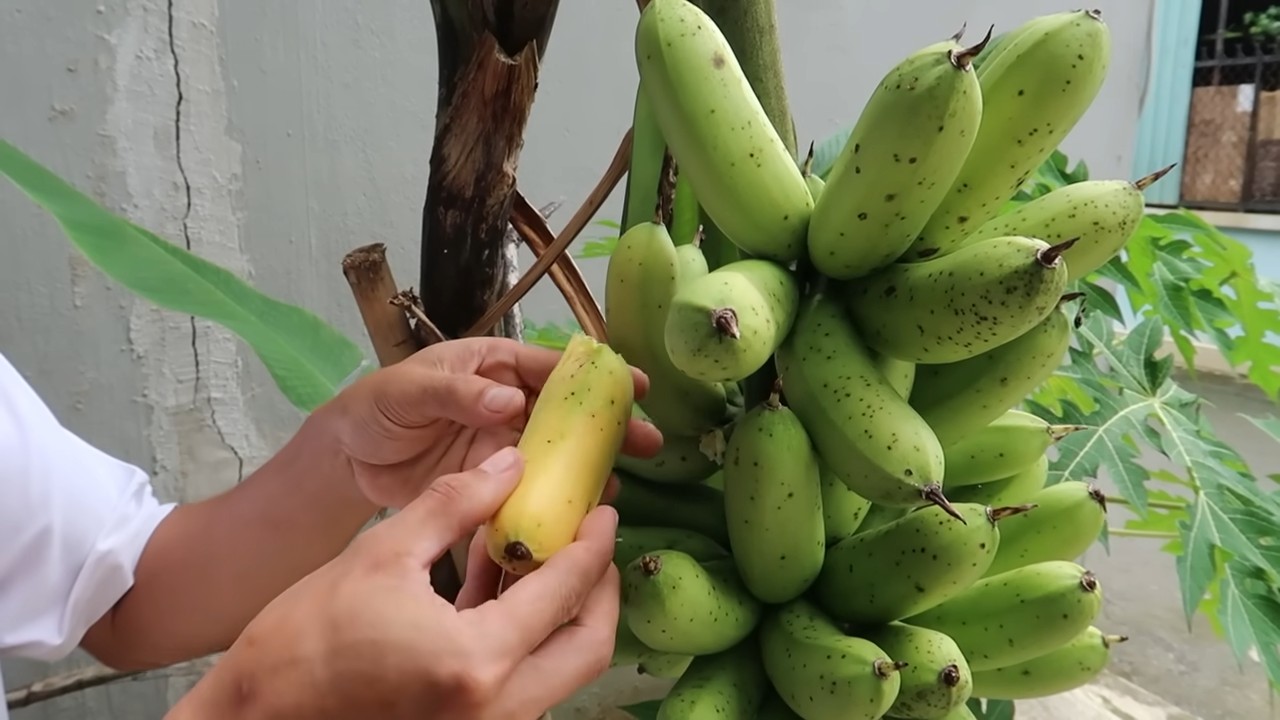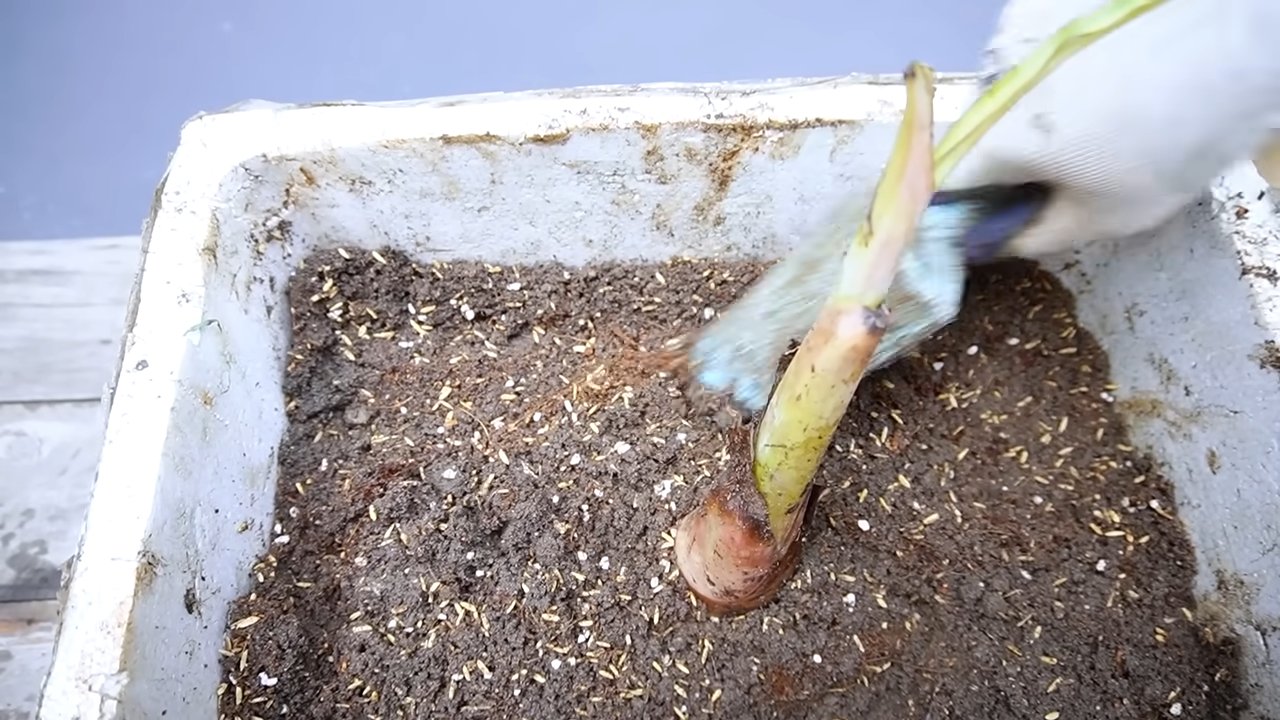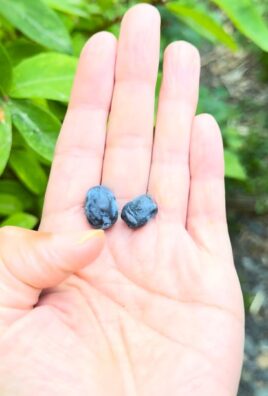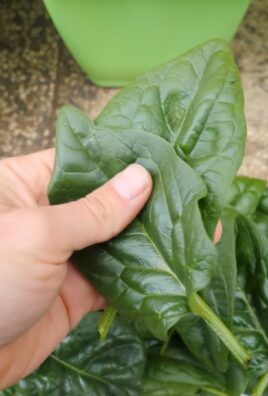Planting bananas for consistent growth can feel like a tropical dream, especially if you’re yearning for homegrown sweetness. But let’s be honest, sometimes those banana plants just don’t cooperate, leaving you with more leaves than fruit. Have you ever wondered why your neighbor’s banana tree is overflowing with deliciousness while yours is…well, just existing?
Bananas have a rich history, originating in Southeast Asia and gradually spreading across the globe. They’ve been a staple food source for centuries, holding cultural significance in many societies. Think about it – from smoothies to desserts, bananas are a versatile and beloved fruit. But bringing that tropical abundance to your own backyard requires a little know-how.
That’s where these DIY tricks come in! I’m going to share some simple, yet effective, hacks that will help you achieve consistent banana growth and, ultimately, a bountiful harvest. We’ll dive into everything from soil preparation and watering techniques to pest control and proper fertilization. Because let’s face it, nobody wants to wait years for a single, sad-looking banana. With these tips, you’ll be well on your way to enjoying the fruits (literally!) of your labor. So, get ready to transform your banana-growing game and finally master planting bananas for consistent growth!

Planting Bananas for Consistent Growth: My Foolproof Guide
Hey there, fellow plant enthusiasts! I’m so excited to share my tried-and-true method for planting bananas that guarantees consistent growth and, hopefully, a bountiful harvest. I’ve experimented with different techniques over the years, and this is what I’ve found works best for me. Get ready to get your hands dirty!
Choosing the Right Banana Variety
Before we even think about digging a hole, let’s talk about banana varieties. Not all bananas are created equal, and choosing the right one for your climate and space is crucial.
* Consider your climate: Are you in a tropical paradise or a more temperate zone? Some varieties are more cold-hardy than others. Dwarf Cavendish is a popular choice for cooler climates as it’s relatively small and can even be grown in containers.
* Think about space: Banana plants can get HUGE! If you have a small yard, opt for a dwarf variety.
* Taste preference: Do you prefer sweet dessert bananas or cooking bananas? Do some research and choose a variety that you’ll actually enjoy eating.
* Disease resistance: Look for varieties that are known to be resistant to common banana diseases in your area. This will save you a lot of headaches down the road.
I personally love the ‘Goldfinger’ banana. It’s relatively cold-hardy, produces delicious fruit, and isn’t quite as massive as some other varieties.
Preparing the Planting Site
Okay, now that we’ve chosen our banana variety, it’s time to prep the planting site. This is arguably the most important step, so don’t skimp on it!
* Sunlight is key: Bananas need at least 6-8 hours of direct sunlight per day. Choose a location that gets plenty of sun.
* Well-draining soil is a must: Bananas hate soggy feet! Make sure the soil drains well. If you have heavy clay soil, amend it with plenty of organic matter like compost, aged manure, or peat moss.
* Protection from wind: Banana leaves are large and can be easily damaged by strong winds. Choose a location that is sheltered from strong gusts. A fence, building, or even a cluster of other trees can provide protection.
* Ample space: Remember, banana plants can get big! Give them plenty of room to grow. Dwarf varieties need at least 6-8 feet of space, while larger varieties need even more.
Planting Your Banana Plant: Step-by-Step
Alright, let’s get down to the nitty-gritty of planting!
1. Dig a hole: Dig a hole that is twice as wide and as deep as the root ball of your banana plant. This gives the roots plenty of room to spread out.
2. Amend the soil: Mix the soil you removed from the hole with plenty of organic matter. I like to use a combination of compost, aged manure, and a slow-release fertilizer. This will provide the banana plant with the nutrients it needs to thrive.
3. Carefully remove the plant from its container: Gently loosen the root ball and remove the plant from its container. Be careful not to damage the roots. If the roots are tightly bound, gently tease them apart.
4. Position the plant in the hole: Place the banana plant in the center of the hole, making sure that the top of the root ball is level with the surrounding soil.
5. Backfill the hole: Fill the hole with the amended soil, gently tamping it down as you go. Be careful not to compact the soil too much.
6. Water thoroughly: Water the newly planted banana plant thoroughly. This will help to settle the soil and get the roots off to a good start.
7. Mulch around the base: Apply a layer of mulch around the base of the plant. This will help to retain moisture, suppress weeds, and regulate soil temperature. I like to use organic mulch like straw, wood chips, or shredded leaves.
Watering and Fertilizing for Optimal Growth
Watering and fertilizing are crucial for consistent banana growth. Here’s my approach:
* Watering: Bananas need consistent moisture, especially during the growing season. Water deeply and regularly, especially during hot, dry weather. The soil should be consistently moist, but not soggy. I usually water every 2-3 days, depending on the weather.
* Fertilizing: Bananas are heavy feeders and need regular fertilization to produce healthy growth and abundant fruit. I use a balanced fertilizer with a higher potassium content. Potassium is essential for fruit development. I fertilize every 4-6 weeks during the growing season. You can also use organic fertilizers like compost tea or fish emulsion.
* Monitor the leaves: Yellowing leaves can be a sign of nutrient deficiency or overwatering. Adjust your watering and fertilizing accordingly.
Dealing with Pests and Diseases
Even with the best care, banana plants can sometimes be susceptible to pests and diseases. Here’s how I deal with them:
* Regular inspection: Regularly inspect your banana plants for signs of pests or diseases. The earlier you catch a problem, the easier it will be to treat.
* Common pests: Some common banana pests include aphids, spider mites, and nematodes. You can control these pests with insecticidal soap, neem oil, or beneficial insects.
* Common diseases: Some common banana diseases include Panama disease, black Sigatoka, and banana bunchy top virus. Prevention is key when it comes to diseases. Choose disease-resistant varieties, practice good sanitation, and avoid overwatering. If you suspect your banana plant has a disease, consult with a local expert for advice.
* Organic solutions: I prefer to use organic solutions whenever possible. Neem oil, insecticidal soap, and beneficial insects are all effective and safe options.
Supporting the Plant
As your banana plant grows, it may need some support, especially when it starts to produce fruit.
* Staking: If your banana plant is leaning or bending over, you can stake it to provide support. Use sturdy stakes and tie the plant to the stakes with soft rope or twine.
* Propping: When the banana bunch starts to develop, it can become quite heavy and cause the plant to topple over. You can prop up the bunch with a wooden support or a forked branch.
* Removing suckers: Banana plants produce suckers, which are new shoots that grow from the base of the plant. While some suckers are desirable, too many can compete with the main plant for resources. I usually remove all but one or two suckers to ensure that the main plant gets enough nutrients.
Harvesting Your Bananas
The moment we’ve all been waiting for! Harvesting your bananas is the culmination of all your hard work.
* Timing is key: Bananas are typically ready to harvest when they are still green but have started to plump up and the ridges have become less prominent.
* Cut the bunch: Use a sharp knife or machete to cut the entire bunch of bananas from the plant.
* Hang to ripen: Hang the bunch of bananas in a cool, dry place to ripen. They will gradually turn yellow and become sweet and delicious.
* Enjoy! Once the bananas are ripe, enjoy them fresh, in smoothies, or in your favorite banana recipes.
Encouraging Consistent Growth: My Secret Weapon
Okay, I’m going to let you in on a little secret that has really helped me achieve consistent growth with my banana plants:
* Consistent feeding schedule: I stick to a strict fertilizing schedule. I use a slow-release fertilizer at planting and then supplement with liquid fertilizer every month during the growing season. This ensures that the plant always has access to the nutrients it needs.
* Regular pruning: I regularly prune away any dead or damaged leaves. This helps to improve air circulation and prevent disease.
* Soil testing: I test my soil every year to make sure that it has the right pH and nutrient levels. This allows me to make adjustments as needed.
* Observation: I pay close attention to my banana plants and look for any signs of stress or disease. The sooner I catch a problem, the easier it is to fix.
Overwintering Banana Plants in Colder Climates
If you live in a colder climate, you’ll need to take steps to protect your banana plants from frost and freezing temperatures.
* Container growing: If you’re growing your banana plant in a container, you can simply move it indoors to a sunny location.
* Mulching: Apply a thick layer of mulch around the base of the plant to insulate the roots.
* Wrapping: Wrap the trunk of the plant with burlap or blankets to protect it from frost.
* Cutting back: In very cold climates, you may need to cut back the plant to the ground. It will regrow from the roots in the spring.
Troubleshooting Common Banana Growing Problems
Even with the best care, you may encounter some

Conclusion
So, there you have it! Mastering the art of planting bananas for consistent growth isn’t just about digging a hole and hoping for the best. It’s about understanding the specific needs of your banana plants and providing them with the optimal environment to thrive. From selecting the right variety for your climate to ensuring proper drainage and nutrient availability, each step plays a crucial role in achieving that consistent, bountiful harvest you’ve been dreaming of.
This DIY trick, focusing on strategic planting techniques and soil enrichment, is a must-try for any banana enthusiast, whether you’re a seasoned gardener or just starting out. The difference between haphazard planting and a well-planned approach is truly remarkable. You’ll not only see healthier, more robust plants, but you’ll also significantly increase your chances of consistent fruit production year after year. Imagine the satisfaction of harvesting your own delicious, homegrown bananas, knowing that you played an active role in their success!
But don’t just take our word for it. We encourage you to experiment with different variations to find what works best for your specific location and banana variety. For instance, if you live in a particularly windy area, consider planting your bananas in a sheltered spot or using windbreaks to protect them from damage. You could also try companion planting with nitrogen-fixing legumes to naturally enrich the soil and reduce the need for synthetic fertilizers. Another variation is to experiment with different mulching materials. While we recommended organic mulch, you could try using shredded leaves, pine straw, or even composted manure, depending on what’s readily available in your area. Remember to monitor your plants closely and adjust your approach as needed.
The key to success lies in observation and adaptation. Pay attention to the signs your banana plants are giving you – are the leaves yellowing? Is the growth stunted? Are there any signs of pests or diseases? By being proactive and addressing any issues promptly, you can ensure that your banana plants remain healthy and productive.
We’re confident that by following these tips and tricks, you’ll be well on your way to enjoying a consistent supply of delicious, homegrown bananas. So, grab your gardening gloves, gather your supplies, and get ready to transform your backyard into a banana paradise!
And most importantly, we want to hear about your experience! Share your successes, your challenges, and any variations you’ve tried in the comments below. Your insights could help other banana growers achieve their own consistent harvests. Let’s build a community of banana enthusiasts and learn from each other! We are excited to see your banana planting journey.
Frequently Asked Questions (FAQ)
What is the best time of year to plant bananas for consistent growth?
The ideal time to plant bananas is typically in the late spring or early summer, after the last frost has passed and the soil has warmed up. This allows the plants to establish themselves during the warm growing season and develop a strong root system before the onset of cooler weather. However, in tropical or subtropical climates with consistently warm temperatures, bananas can be planted year-round. Consider your local climate and growing conditions when determining the best time to plant.
How much sunlight do banana plants need for optimal growth and consistent fruit production?
Banana plants thrive in full sunlight, requiring at least 6-8 hours of direct sunlight per day. Adequate sunlight is essential for photosynthesis, which fuels the plant’s growth and fruit development. If your banana plants are not receiving enough sunlight, they may exhibit stunted growth, pale leaves, and reduced fruit production. If you live in an area with intense sunlight, especially during the hottest part of the day, you may need to provide some afternoon shade to prevent leaf scorch.
What type of soil is best for planting bananas to ensure consistent growth?
Banana plants prefer well-draining, fertile soil that is rich in organic matter. The ideal soil pH is between 6.0 and 7.0. Heavy clay soils can be amended with compost, sand, and other organic materials to improve drainage and aeration. Sandy soils can be amended with compost and other organic materials to improve water retention and nutrient availability. Before planting, it’s a good idea to conduct a soil test to determine the nutrient levels and pH. This will allow you to amend the soil accordingly to meet the specific needs of your banana plants.
How often should I water my banana plants to promote consistent growth?
Banana plants require consistent moisture, especially during the growing season. Water deeply and regularly, ensuring that the soil remains consistently moist but not waterlogged. The frequency of watering will depend on the climate, soil type, and the size of the plant. In hot, dry weather, you may need to water daily or even twice a day. In cooler, wetter weather, you may only need to water once or twice a week. A good rule of thumb is to check the soil moisture regularly and water when the top inch or two of soil feels dry to the touch.
What type of fertilizer should I use to promote consistent banana growth and fruit production?
Banana plants are heavy feeders and require regular fertilization to support their rapid growth and fruit production. Use a balanced fertilizer that is specifically formulated for fruit trees or tropical plants. A fertilizer with a higher potassium content is particularly beneficial for promoting fruit development. Apply fertilizer according to the manufacturer’s instructions, typically every 4-6 weeks during the growing season. You can also supplement with organic fertilizers such as compost, manure, and seaweed extract.
How do I protect my banana plants from pests and diseases to ensure consistent growth?
Banana plants are susceptible to a variety of pests and diseases, including aphids, spider mites, nematodes, and fungal infections. Regularly inspect your plants for signs of pests or diseases and take action promptly to prevent them from spreading. You can use organic pest control methods such as insecticidal soap, neem oil, and horticultural oil to control pests. To prevent fungal diseases, ensure good air circulation around your plants and avoid overwatering. You can also use fungicides if necessary.
How do I prune my banana plants to promote consistent growth and fruit production?
Pruning is an important part of banana plant care. Remove any dead, damaged, or diseased leaves regularly. After a banana plant has fruited, it will die back. Cut the pseudostem (the trunk-like structure) down to the ground to allow new suckers to emerge. These suckers will eventually develop into new banana plants. Select the strongest sucker to replace the parent plant and remove any other suckers that are growing too close together.
How long does it take for a banana plant to produce fruit after planting?
The time it takes for a banana plant to produce fruit depends on the variety, climate, and growing conditions. In general, it takes about 9-12 months for a banana plant to flower and produce fruit. The fruit will then take another 3-6 months to ripen. So, from planting to harvest, you can expect it to take about 12-18 months.
How do I know when my bananas are ripe and ready to harvest?
Bananas are typically harvested when they are still green but have reached their full size. The bananas will then ripen off the plant. To determine if your bananas are ready to harvest, look for the following signs: the bananas should be plump and rounded, the ridges on the bananas should be less prominent, and the bananas should be easily detached from the bunch. You can also check the color of the bananas. As they ripen, they will turn from green to yellow.
Can I grow bananas in containers?
Yes, you can grow bananas in containers, but you will need to choose a dwarf variety that is suitable for container growing. Use a large container with good drainage and fill it with a well-draining potting mix. Water and fertilize regularly, and provide plenty of sunlight. Container-grown bananas may not produce as much fruit as those grown in the ground, but they can still provide a delicious and rewarding harvest.




Leave a Comment